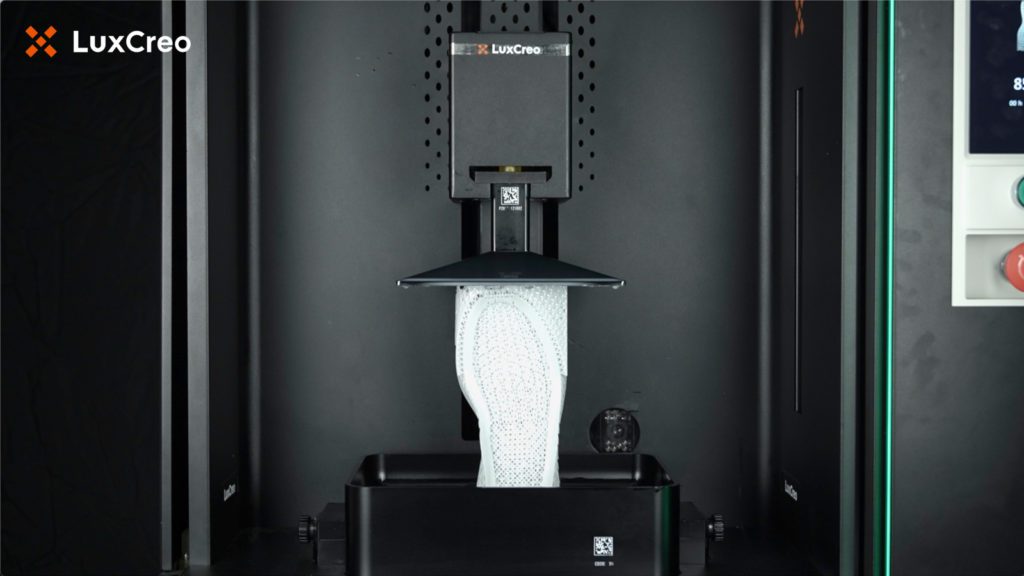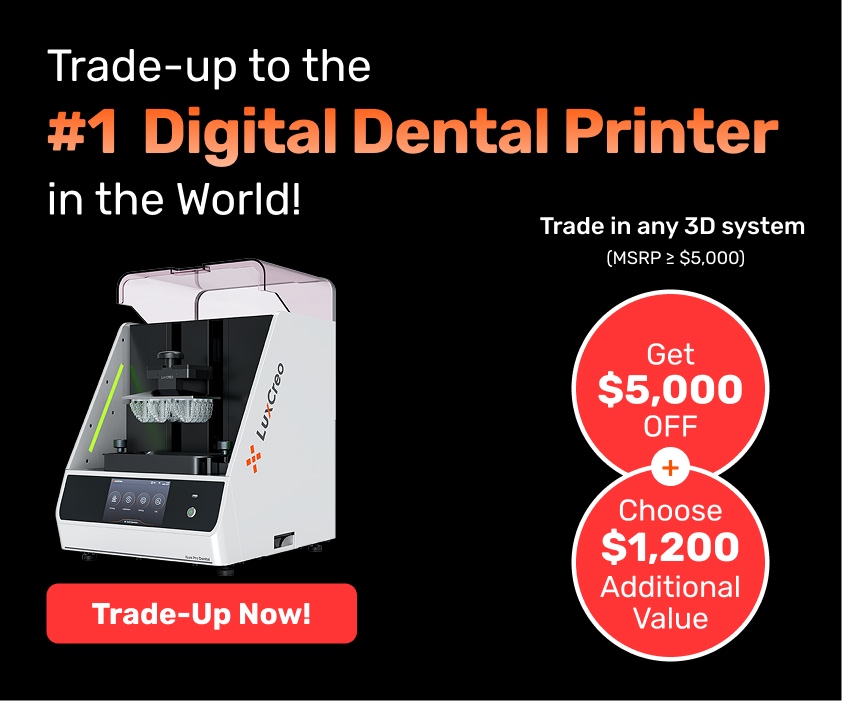
3D Printing Applications in the Footwear Manufacturing Industry
The revenue associated with 3D printed footwear currently makes up 0.3% of the total global footwear market revenue, according to the latest statistics from Smartech. Experts predict the figure will grow to 1.5% of overall footwear revenues, or $5.9 billion, by 2029.
The projected revenue increase demonstrates the continued adoption of additive manufacturing processes by footwear manufacturers. 3D printers have been available since the 1980s. However, many industries have only recently integrated 3D printing solutions into their production processes, as significant advances in machines, material, and software are not only meeting industry requirements but also enabling greater innovation with better performance production parts. Today many footwear companies use 3D printers to optimize design, prototyping, and full production.

How the Footwear Manufacturing Industry Uses 3D Printing
Traditionally, footwear manufacturers have used injection molding to mass-produce different parts that make up a shoe. Workers take the various components and cut, glue, and stitch them together to form the final product. While traditional footwear manufacturing methods are still valuable for high volume production, many footwear companies are now leveraging 3D printers to create parts of a shoe.
The 3D printed parts last longer and enable higher performance and comfort compared to traditionally manufactured foam parts. 3D printing also provides greater design freedom and diversity in final product properties. For example, designers can create specific geometries and define where they are located, such as to provide greater cushioning in the heel and firmness in the arch.
Footwear companies can use 3D printers to produce:
- Midsoles: 3D printing technology allows companies to produce midsoles with a customization level that is impossible with traditional methods. Elements like weight, flexibility, and wall-thickness can all be customized to the user for peak performance. 3D printed midsoles can be printed with polymer materials that last much longer than low-performance ethylene-vinyl acetate (EVA) or high-performance polyether block amide (PEBAX) foams.
- Uppers: In conventional footwear production, uppers are the most labor-intensive step. To form an upper, workers must cut multiple textile pieces and then stitch them together. 3D printing can consolidate parts into a single design made of flexible plastic such as thermoplastic polyurethane (TPU) or thermoset polyurethane (PU). The consolidated design eliminates assembly steps to simplify the overall production process. A recent example is Nike’s “Flyprint” uppers.
- Heels: Athletic footwear makers have been using 3D printers to create heels with lattice structures. The lattice heels are more stable than conventional heels while still delivering performance. For example, New Balance’s 2019 “FuelCell Echo” with a 3-D printed heel component.
- Insoles: The traditional process for creating orthopedic insoles requires significant hands-on work from podiatrists and a combination of materials to meet the patient’s needs. Insole producers can simplify the process by using 3D scanners and printers to digitalize the workflow. Using digital scans of the foot rather than a plaster mold or cast, specialists can 3D print insoles from a single material faster and at a lower cost than conventional methods.
- Enhancement Components: Speciality shoe components, such as pressurized air-filled midsoles, can improve cushioning and energy return of footwear. The enhancement components can be 3D printed to better fit the dimensions of a customer’s feet, improving the shoe’s performance.
3D printing technologies have the potential to improve nearly every part of a shoe. With better designs, 3D printing can amalgamate parts, eliminating assembly steps and creating more durable final products. Companies can also leverage 3D printers to improve the manufacturing process.
How 3D Printing Technology is Benefiting the Footwear Manufacturing Industry

With a modern 3D printing solution, footwear companies can optimize prototyping, accelerate the time-to-market for finished products, and expand the possibilities of personalization and customization:
Optimize Prototyping
Footwear companies can use 3D printers to create both aesthetic and fully-functional prototypes and don’t require tooling to produce models. Simultaneous prototypes that feature different designs, dimensions, and textures can be easily printed and tested. Capable of creating geometrically complex shapes, designers can leverage 3D printing to produce intricate designs and consolidate parts.
Industrial 3D printers like the Lux 3 create prototypes with production-ready materials, allowing footwear companies to perform field testing with fully-functional prototypes at an earlier stage. Early testing allows companies to reduce risk – rapidly generate feedback and validate designs.
Faster Time-to-Market, Reduced Risk, and Greater Agility to Meet Market Demand
The rapid prototyping capabilities of 3D printers enable companies to compress development time and bring new products to market faster than with traditional methods. Early field testing with fully-functional prototypes ensures the product operates as intended and reduces potential market risks.
Once the product is in the market, companies can more effectively respond to customer demands. With tool-free production, 3D printing allows faster design changes in response to market feedback and trends. And, for products that are entirely 3D printed, inventory can be quickly replenished if the 3D printer is connected to an additive manufacturing smart factory – immediately accessing manufacturing capacity and scaling up production demand.
Deep Customization Possibilities
Production processes like injection molding cannot produce individualized products due to tooling constraints and set up time. Customers that need custom footwear require a specialist to hand make the product. With 3D printing, it is much easier, faster, and more consistent to make custom products.
Traditionally, for orthopedic insoles and custom shoes, specialists make foot lasts that are models of the patient’s feet. Then they create the insole or custom shoes using different materials to provide the necessary support. 3D printers can produce single-material insoles and custom shoes from digital scans or lasts. Directly printing the insole or custom shoe from a precise scan or digital last eliminates costly materials, labor cost, and production steps while providing longer-lasting and potentially higher quality products.
Footwear manufacturers can also use 3D printing technology to develop diabetic footbeds. Patients suffering from diabetic foot syndrome wear custom-produced footbeds to minimize the risk of foot ulcers. Tailored to fit the patients’ foot dimensions, the footbeds provide the ideal amount of cushioning and stiffness. 3D printed lattice footbeds are digitally designed to relieve pressure from affected areas and are more breathable made of longer-lasting material, and are more accurate to the patient’s feet than conventional solid footbeds.
Experience The Benefits of 3D Printing
Over the last decade, the footwear manufacturing industry has increasingly utilized 3D printing solutions to create better products and improve production processes. Printers like the Lux 3L enable companies to perform both aesthetic and fully-functional prototyping, compressing development time and allowing a faster time to market. By partnering with LuxCreo’s 3D printer-filled smart factory, companies also have instant access to scale.
If your company is looking to improve its operation with a 3D printing solution, LuxCreo can help. Our industrial printers and innovative materials enable footwear manufacturers to streamline the production of longer-lasting, high-performance products.
For more information on how our services can benefit those in the footwear manufacturing industry, visit our contact page or call (650) 336-0888.
Subscribe to Our Newsletter
Be the first to get our latest updates and free trials!
Popular Resources
Follow Us
Featured Products

4D Aligner™
First Smart ActiveMemory™
Aligner

iLux Pro Dental Solution
Ultimate 1-Click Dental
Application Solution

LuxCloud Dental
Your One-stop Digital Dentistry
Platform

